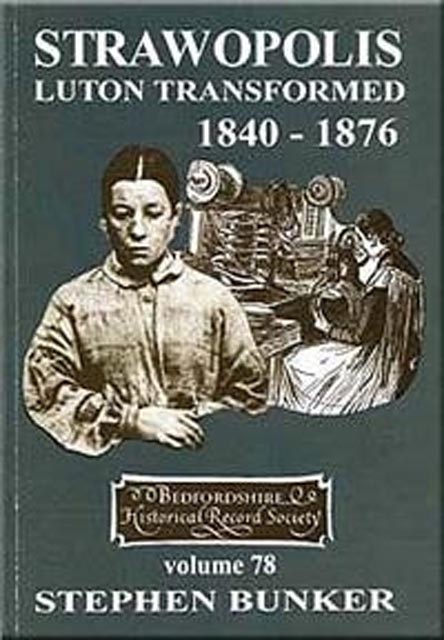Book contents
- Frontmatter
- Dedication
- Contents
- List of Illustrations
- Acknowledgements
- Abbreviations
- Introduction
- Chapter One Hats, Land and Houses
- Chapter Two The Board of Health
- Chapter Three Society: Belief and Behaviour
- Chapter Four Politics, Power and Self-determination
- Epilogue
- Biographical notes
- Notes on place names
- Bibliography
- Sources
- Name of Index
- Subject Index
- Recent Publications
Epilogue
Published online by Cambridge University Press: 03 August 2023
- Frontmatter
- Dedication
- Contents
- List of Illustrations
- Acknowledgements
- Abbreviations
- Introduction
- Chapter One Hats, Land and Houses
- Chapter Two The Board of Health
- Chapter Three Society: Belief and Behaviour
- Chapter Four Politics, Power and Self-determination
- Epilogue
- Biographical notes
- Notes on place names
- Bibliography
- Sources
- Name of Index
- Subject Index
- Recent Publications
Summary
The town of ‘Strawopolis’ appeared as a thinly disguised Luton in a slide illustrated temperance lecture written by a local campaigner, T.G. Hobbs, during the 1890s. Hobbs may have conceived of the title himself or he may have lifted it from an earlier designation. Either way, the label was apt and this ‘nest of freeholders’ had experienced a remarkable transformation during the middle part of the nineteenth century. This wholesale change embraced Luton's economy, its social composition and its institutions. The landscape of the town was a testimony to the small speculators who had laid out the streets that were teeming with small enterprises. Although the town's powerful association with Liberalism and nonconformity would fade in the first half of the twentieth century, Luton's defining characteristic - as a place of plentiful work and affordable homes-was set in the middle of the nineteenth century, and would last until the end of the next.
In other respects, Sir Robert Peel's sneer that its houses were ‘all built of straw’ was also well-suited. All that flourished in the town was dependent upon the good fortune of a seasonal trade, subject to fluctuations in fashion, disruptions in the supply of plait and even changes in the weather. It also required, in the main, female labour. At the time that Hobbs was first delivering ‘Strawopolis’, Asher Hucklesby, as Mayor of Luton, was referring darkly to ‘the hundreds of boys and men who wandered listlessly about the town for most of the year’. Thus, it was from the last decade of the nineteenth century that the second phase of Luton's transformation was set in place. Between this time and the end of the Great War, the town's dependence upon the straw hat trade was deliberately broken, and this was achieved in a very Lutonian manner. This conscious change involved the Borough Council and the Chamber of Commerce (the twin creations of William Bigg), bridged by a New Industries Committee. It also absorbed local public utilities, private landowners and syndicates created in order to speculate upon land. At no time, however, was there an all-encompassing strategy formulated and driven on by an over-arching single authority, or through a federation of interested parties. Instead, this metamorphosis was brought about, typically, through an amalgam of individuals and organisations each pursuing their own goals of public good and private profit.
- Type
- Chapter
- Information
- StrawopolisLuton Transformed 1840-1876, pp. 247 - 248Publisher: Boydell & BrewerFirst published in: 2023



